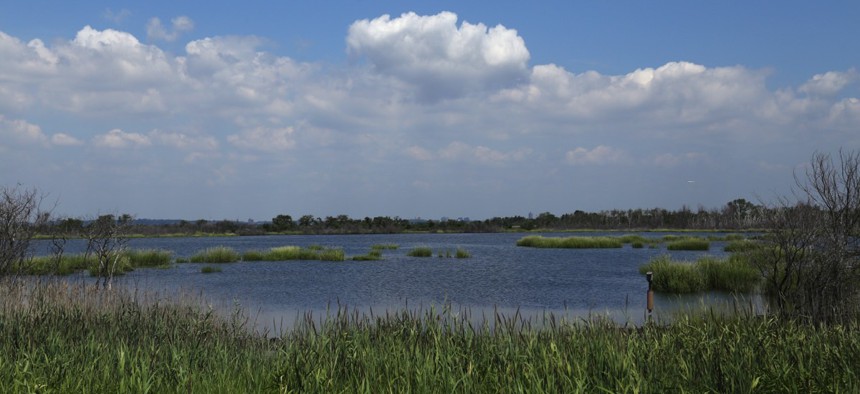Improving Conservation Planning With GIS to Improve Water Quality

Mapping offers ways for governments to identify, prioritize and mark green infrastructure for preservation and rehabilitation.
WASHINGTON — In January, New York Gov. Andrew Cuomo proposed a $2 billion effort to improve water quality in the Buffalo-Niagara region and elsewhere around the state, with green infrastructure projects playing a central role.
Green infrastructure refers to managed assets like open spaces, natural lands, wildlife habitats, and parks that improve quality of life in communities.
In Buffalo’s case, conservation of water resources, buffers and wetlands will build upon the Democratic governor’s mission but not without proper planning that leverages an area’s natural attributes for environmental design.
“First conservation, then mitigation,” Karen Firehock, executive director of the Green Infrastructure Center, said on Tuesday during an Esri FedGIS Conference session in the nation’s capital.
Firehock’s Charlottesville, Virginia-based center helps communities evaluate their green assets. That means protecting and connecting the natural landscape, and building in the least impactful manner, before mitigating negative impacts. It’s not uncommon for developers to suggest things like cutting down trees to put in rain gardens, which defeats the purpose, Firehock said.
Redlands, California-based GIS company Esri unveiled a suite of free, open-source apps last year to help state and local governments identify their most valuable green infrastructure for conservation and rehabilitation prior to development.
One newly generated national database within the Green Infrastructure Initiative is mapped in an online app to visualize “large, intact landscape cores”—every resource that’s at least 100 acres in size and 100 meters in width—said Ryan Perkl, Esri’s green infrastructure lead.
More than 50 environmental attributes are tied to particular locations to inform local planning decisions, and using filters New York officials can find Buffalo-area green infrastructure for conservation by flagging landscape cores with enough desired surface water and wetlands.

The personalized model can then be imported to a second app scoring and ranking landscape cores based on their importance for protecting water quality, biodiversity or whatever Cuomo’s team wishes to emphasize.
“The higher the score, the higher the likelihood that asset is important to us,” Perkl said.
Taking the ranked cores and putting them into Esri’s GeoPlanner provides even more context, as the Protected Areas Database of the U.S. map layer can show which Buffalo-area wetlands are already be protected at the federal level. Meanwhile, a Niagara policy areas layer denotes which land is developed, developing, rural or reservation.
“We know cores in the developed and developing area are actually more at risk than areas listed rural,” said Gregory Brunner, Esri imagery scientist.
Another layer tracks population growth as a threat to conservation areas and different protection plans can be compared to find consensus areas for conservation.
Dave Nyczepir is a News Editor at Government Executive’s Route Fifty and is based in Washington, D.C.
NEXT STORY: McAuliffe: Nation’s cyber defense strategy falls to governors






